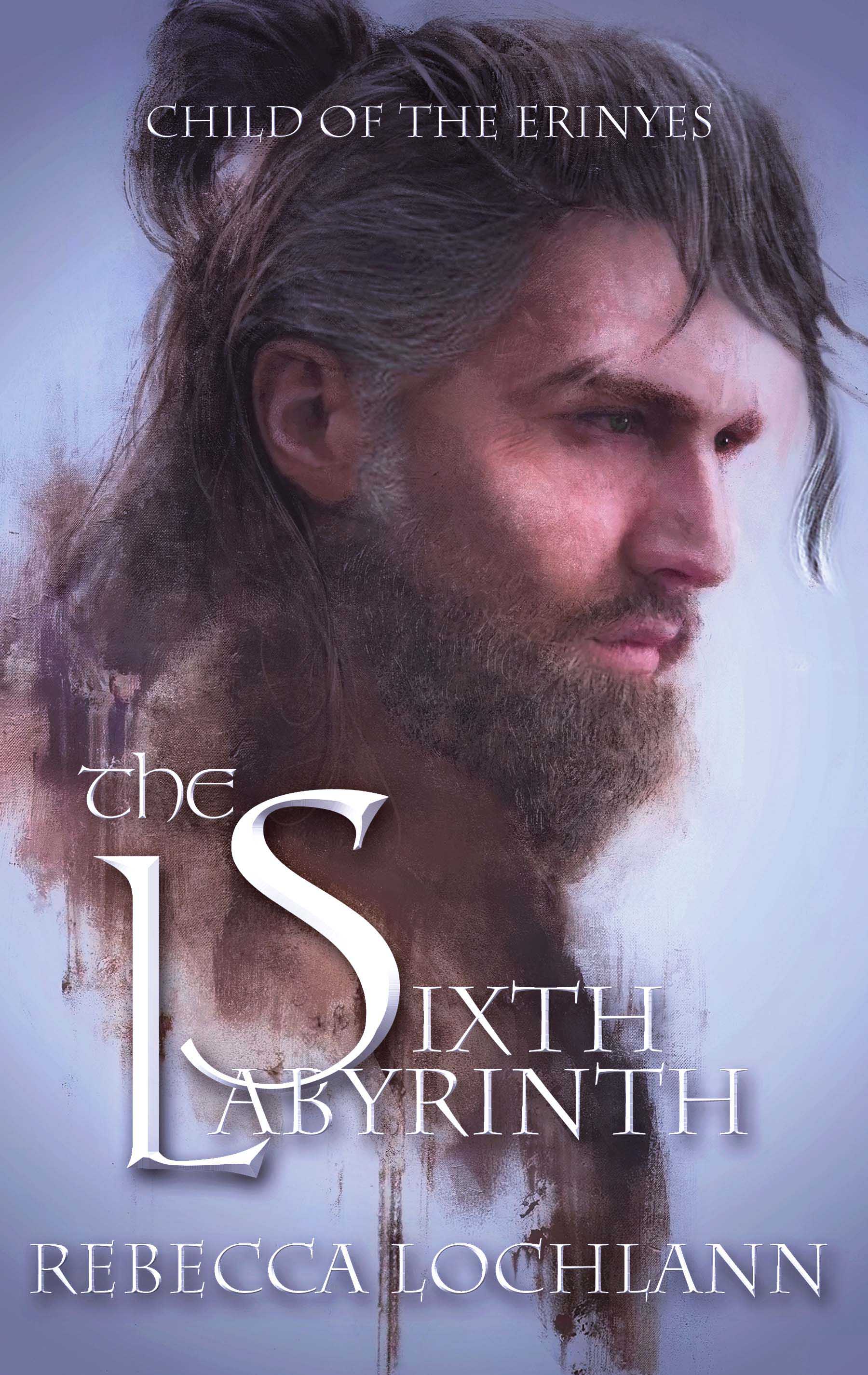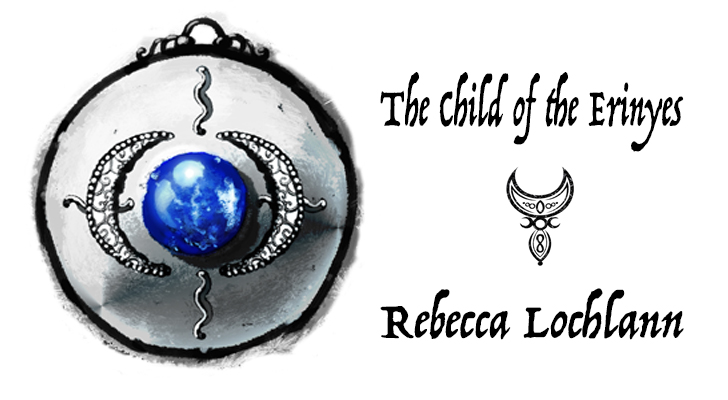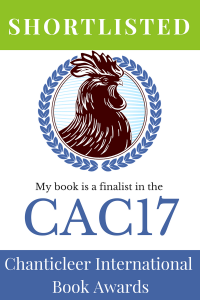Blog Archives
Author’s Notes: The Sixth Labyrinth
Posted by Rebecca
January 14, 2017
Author’s Notes
(For those who like to peek behind the curtain)
Who loves author’s notes? Well here they are. We did not include the author’s notes (and the three epilogues) in the paperback version of The Sixth Labyrinth, in order to cut down on the page count and make the book more affordable.
* * * *
The Sixth Labyrinth is a complicated weave of truth and fantasy: Yes, liberties were taken. Following are notes, both about the liberties and truths, for those who might be interested.
Some of the following could be spoilers for those who haven’t yet read the book.
* * * *
The maiden voyage of the Princess Louise was July 1, 1872. I moved this date back to May, for the purposes of the story. (I wanted Morrigan to be married and in Glenelg by Michaelmas.)
I was thrilled to discover some maps of Stranraer as it was in the 1850s. I used those to help describe the city, as well as my own memories from staying there.
I have an extensive library of books and other media detailing the Scots language and dialects. I have studied these, off and on, for about twenty-five years. This has equated into me understanding some but still being able to authentically speak almost none. I was extremely fortunate to receive the help of two native Gaelic speakers for this book, and I will always be grateful for their assistance and patience.
One of my favorite dictionaries is the Chambers Scots Dictionary, (compiled by Alexander Warrack, M.A.), which I purchased while in Scotland years ago. It was first published in 1911, and I’ve noticed it contains many words that apparently have been dropped from newer publications. Perhaps those words have gone out of favor, but I was happy to have access to words that were likely common in the 1800s. Here is the subtitle: Serving as a glossary for Ramsay, Fergusson, Burns, Scott, Galt, minor poets, kailyard novelists, and a host of other writers of the Scottish tongue. I’m sure I fit in there somewhere!
Beannachd leat, mo nighean: I understand this isn’t the way Gaelic speakers would say this, but I chose it because I wanted Morrigan to be able to question Curran later about those words. (Goodbye, my daughter.)
Castle Kennedy, the ruin that Curran and Morrigan explore outside Stranraer, still stands. It was built by the clan of that

Castle Kennedy by Francis Grose, pub-1789, in Antiquities of Scotland, vol-2 pp-191-192: Public Domain, Wikipedia Commons
name who controlled the area in the distant past. When I was there, it was off by itself in an empty field; we had to climb over a fence and were alone in exploring it, which no doubt added to its ghostly feel. I think now there’s a parking lot nearby, but there wasn’t then.
Lighthouses:
The description of Dhu Heartach was taken from A Star for Seamen, by Craig Mair. Work on Dhu Heartach was completed in November 1872.
Corsewall was built in 1817, Cape Wrath in 1828, Berneray in 1833, and Cairn Point in 1847, all by the Stevenson family of engineers.
The Glenelg Clearances: My descriptions of the Glenelg Clearances are an amalgam of evictions over the years, from various areas. In reality, Glenelg was cleared more than once, with the biggest eviction (500 people) occurring in 1849, and it did not happen exactly how I’ve portrayed it. The anguish I describe encapsulates almost every account I studied of people being cleared from their ancestral homes, but some were done in a more humane fashion than others, and in some instances, it was the crofters themselves who petitioned to be cleared. There are arguments about the Clearances, whether they were good or bad, kind or cruel, and I am not putting myself into those arguments. I had a vision of being a crofter in those days, of living on land my family had lived on for generations, of having everything fall apart, and of being relocated to a far away country, and that’s what I wrote.
Randall Benedict, the story’s landowner at the time of the Glenelg clearings, is my invention, and bears no resemblance to any true-life landowners.
In the late eighteen hundreds, the Highlands of Scotland were gradually converted from sheep farms to open parks for killing deer and birds. The pastime was popular among the wealthy British.
The Macleods did own the land around Glenelg in the 1600s, and would have been the builders of Kilgarry, (if Kilgarry existed. Which it didn’t— doesn’t. Kilgarry is my invention.)
My descriptions of Glenelg are not exactly what one would see these days, because I was trying to envision what the area might have looked like in the 1870s. I think there would have been more forest and less agriculture.
The Five Sisters of Kintail: it’s a nice label, although not used in Gaelic, and much easier than listing each one individually:
Sgùrr nan Spàinteach (The Peak of the Spaniards): Sgùrr na Ciste Duibhe (The Peak of the Black Chest): Sgùrr Fhuaran (The Peak of the Springs): Sgùrr nan Saighead (The Peak of the Arrows): Sgùrr na Càrnach (The Peak of the Stony Place)
In August of 1872 a sea serpent was indeed sighted and documented swimming through the straits of Kylerhea off Glenelg’s coast.
I’ve never actually heard that selkies have a magic “gaze” that will bewitch any they turn it upon. That was my invention.
Syncope and concussions have obviously been around for a long time (as long as we have had brains?) The word syncope has two meanings: it appears that the word as it pertains to fainting has been around since about the 1400s. There was work being done in the Victorian era on concussions, but no one knew the depth of details that we have today. So diagnosing Morrigan’s fainting would have been mostly guesswork. The aura she often sees before fainting is a symptom of concussion as well as other medical conditions, and there is speculation that concussions can sometimes cause nightmares (although I think it’s safe to say there are other powers at work with Morrigan’s nightmares!)
Origin of syncope: The American Heritage Dictionary: “Middle English sincopis, from sincopene, from Late Latin syncopēn, accusative of syncopē, from Greek sunkopē, from sunkoptein, to cut short : sun-, syn- + koptein, to strike.”
The word “concussion” has been around since ancient times, but came into general use in the 16th century, along with descriptions of some of the common symptoms.
A few people who have had concussions continue to experience symptoms for the rest of their lives— dizziness, headaches, mood changes, etc, and often stress or anxiety will bring on the symptoms. Current theory suggests that post concussion syndrome is more likely to persist in those who have suffered several concussions, as Morrigan has.
Hypnotism: as I mentioned in the book, hypnotism was developed by James Braid, a Scot. He coined the term “hypnotism” in the 1850s and used self-hypnotism to alleviate pain. After Braid’s death in 1860, interest in the procedure died out in England, and was later revived in France.
Readers might detect similarities between Heinrich Baten, my fictitious Papal Inquisitor, and Konrad Marburg, a historical figure. Yes, I did think of him as I wrote the Inquisition scenes. Klaus Berthold, however, is completely fictitious: I did no reading about any historical archbishops, and all I know about the Archbishops of Cologne is the title.
As noted, Curran is not a true laird, but is called “Laird” by his crofters as a sign of their respect. The “Eilginn” title is my invention, an honorary moniker given by the locals, and hearkens to the area around Glenelg, the Pictish Ruins, and the forest over to Shiel Bridge. Curran is not landed gentry and so it is proper for people outside of his little world to call him “Mr. Ramsay.”

Dun Troddan. Photographer: Anne Burgess, Creative Commons https://commons.wikimedia.org/wiki/File:Dun_Troddan_-_geograph.org.uk_-_8424.jpg
Dun Troddan and Dun Telve are two of the most well preserved brochs (ancient stone buildings) left in Scotland.
Only Clydesdales are used in the oda? No. My invention. The part about the horses being stolen the night before is real though.
Don’t go up to Cape Wrath thinking you’ll find tunnels under the lighthouse, or the remains of a fort! (This will all be detailed in Falcon Blue.) They live only in my imagination. The higher oxygen content of the air at Cape Wrath is documented, and the Clo Mor cliffs at Cape Wrath are the highest on the British mainland, at over nine hundred feet.
I also made up the MacNeil house in Castlebay, on Barra, and of course Bishop House as well.
Anachronisms: Not. The setting of The Sixth Labyrinth runs parallel to the work women were starting to undertake in Britain to obtain equal rights. Obviously, women were thinking the things that are brought up in my book. Many might not have, and many more who did might never have breathed a word about it, but change was on the horizon. Additionally, Morrigan, who possesses the subconscious memories of Aridela, has at this point five previous lives influencing her thoughts and the way she sees the world. See Elizabeth Clarke Wolstenholme, John Stuart Mill, and others.
I could go on and on about Josephine Butler, Elizabeth Wolstenholme, and the efforts of the Ladies National Association in trying to repeal the Contagious Diseases Acts. It’s true that prostitutes were seen in a different light than the men who had sex with them. The women were perceived as unclean, “degraded,” and it was believed that they alone carried syphilis (at least that’s what the lawmakers said they believed). The men were not considered unclean or degraded, nor were they bothered with exams after they protested the idea. And it’s true that women who were not prostitutes were pulled into this net of forced examination. The Acts were at last repealed in 1886. The LNA continued their work and were instrumental in getting the age of sexual consent increased from 12 to 16. The actual 1871 Commission Report can be read here: https://archive.org/details/b21365945
The LNA was a real team effort and a role model for me: the group had many committed male supporters as well as female. This concept is of passionate personal interest, as I feel we will never get anywhere unless we’re all willing to leave gender prejudices behind and achieve it together. The discerning reader will see that as Aridela lives her various incarnations, she receives support and assistance not only from her reincarnated female followers, but men and women in the current time periods. In The Sixth Labyrinth, she is helped and influenced not only by those you might expect, but also her brother Nicky, Robert Louis Stevenson, Seaghan MacAnaugh, James Whistler, Lily Donaghue, Jamini, and Hugh Drummond.
Separate but connected: I reject the idea that love and feminism are mutually exclusive.
White bread was available by the 1820s, but it wasn’t exactly what modern people might think. It wasn’t pre-sliced, and the term simply meant that it was baked from a more finely ground flour, not modern bleached flour.
Poetry and Songs:
My Love She’s But a Lassie Yet, lyrics by Robert Burns
Bonny Wee Thing, lyrics by Robert Burns
I’ll Meet Thee on the Lea-Rig, lyrics by Robert Burns
Ae Fond Kiss, lyrics by Robert Burns
Ca’ the Yows to the Knowes, lyrics by Robert Burns
My Heart’s in the Highlands, by Robert Burns
Ode to the West Wind, by Percy Bysshe Shelley
She Was a Phantom of Delight, by William Wordsworth
Tristram and Iseult, by Matthew Arnold, published 1852
Master McGrath did win the Waterloo cup in the years mentioned.
The builder and owner of the famous Cutty Sark was Jock Willis, who built her in 1869. The race between the two clippers Cutty Sark and Thermopylae happened as described in the summer of 1872.
At the time of Nicky’s death (August 10, 1872), RLS was in Frankfurt. I used my authorial license to have him come back briefly to attend the funeral.
RLS did agree, reluctantly, to study law, though he wanted to write. Louis’s father attempted creative writing when young, but hid that fact from his son, and pressured him to become an engineer. Thomas believed that women should be able to divorce their husbands, but that husbands shouldn’t be allowed the same privilege.

Public Domain image: copyright expired, per United States, Australia, the European Union and those countries with a copyright term of life of the author plus 80 years. https://commons.wikimedia.org/wiki/File:Robert-louis-stevenson.jpg
RLS wrote that he thought he would never be great or rich. He did want his own children very much. He loved opera, and stated that he wished he could live his life inside one.
I used the older spelling for the May 1 festival of Beltain. The spelling “Beltane” appears to have been adopted from James Frazer’s The Golden Bough, which wasn’t published until after my story. The spelling I use is from Anne Ross’s wonderful book The Folklore of the Scottish Highlands, which I highly recommend to anyone wanting to read more about the early customs, traditions, and beliefs of Scotland.
I made up the Catholic Church at the estuary in Glenelg.
Queen Victoria loved Scotland; she made it a popular place to go on holiday. She and Albert purchased Balmoral Castle and she often attended the Highland Games at Braemar.
As everyone knows by now, gossip ran rampant in the years after Albert’s death that Victoria was having an affair with her Scottish servant, John Brown. She even had statues made of him.
Gladstone was lampooned for trying to rescue the prostitutes of London from their sins, but he was actually quite generous and helpful in that regard, when he certainly did not need to be.
James McNeill Whistler was a well-known figure in 1870s London. Whistler often went to Victor Barthe’s art classes in order to disrupt them.
The rumor that Richard Wagner may have been King Ludwig’s lover is an old one that is no doubt rumor by association, and is doubtless untrue. Why can men never be friends with other men without being accused of homosexuality? Ludwig may have been gay— Wagner was not. Ludwig helped Wagner financially and was his patron. Without Ludwig’s patronage, much of Wagner’s music might not have become a reality. (I’m grateful to King Ludwig for this.)
As far as the conductor— Lily has heard wrong. It was one of Hans von Bülow’s assistants who had a breakdown and had to be institutionalized.
The place where the denouement occurs is loosely based on Gunamuil, the lower promontory next to Dun Mingulay, but is really a composite of the various cliffs, arches, and caves on the west coast of Mingulay, adapted for the story’s benefit.
St. Brigit: the name of this important saint of both Ireland and Scotland has several different spellings. I chose to use the one Anne Ross used in her book Folklore of the Scottish Highlands.
About the word “all right.” Apparently it wasn’t coined yet in the 1870s. I used it anyway, for convenience, clarity, and modern ears, but I tried not to use it very often.
Did Scots put on mourning clothes after the death of a loved one? I can find no evidence that they did NOT, except for a mention in Scottish Customs From the Cradle to the Grave, where there are 5 or 6 mentions of YES on the mourning, and one mention of NO, and that was offered by a woman in 1988, not the Victorian period. I searched and searched for a definitive decision on this: most of what I found suggests that Victorian Scotswomen did put on mourning: besides, Queen Victoria made the white wedding dress popular, so she probably made the widow’s weeds popular as well.
I did read in The Pictorial History of Scotland: From the Roman invasion to the close of the Jacobite Rebellion. A, Volume 1, by James Taylor, published in 1859, that mourning dress was not known in Scotland until 1537.
I didn’t want my book to be as long as Clavell’s Shogun, so I had some people speak English who probably would not have in real life, like Kilgarry’s servants.
Lebadeia was a shrine in Greece, north of Delphi; Pausanias tells a story about seeking prophecy from the oracle there, and how terrifying it was.
map: The Sixth Labyrinth
Posted by Rebecca
March 16, 2016
You can click on this image to enlarge it.
The mountain elements on this map were created by StarRaven, aka Daphne Arcadius, at DeviantArt. The other design elements are from Shutterstock.
The Sixth Labyrinth (April 8, 2016)
Posted by Rebecca
March 15, 2016
Book Five, The Sixth Labyrinth, is live and available at many sites. You can find purchase links in this post below or in the “Links to Purchase” tab.
Update: Paperback version now available!
Athene first clues in Aridela about what will happen in The Thinara King. Aridela doesn’t understand the message then, but she will, in time. Here’s what Athene tells her:
I have lived many lives since the beginning, and so shalt thou. I have been given many names and many faces. So shalt thou, and thou wilt follow me from reverence and worship into obscurity. In an unbroken line wilt thou return, my daughter. Thou shalt be called Eamhair of the sea, who brings them closer, and Shashi, sacrificed to deify man. Thy names are Caparina, Lilith and the sorrowful Morrigan, who drives them far apart. Thou wilt step upon the earth seven times, far into the veiled future. Seven labyrinths shalt thou wander, lost, and thou too wilt forget me. Suffering and despair shall be thy nourishment. Misery shall poison thy blood. Thou wilt breathe the air of slavery for as long as thou art blinded. For thou art the earth, blessed and eternal, yet thou shalt be pierced, defiled, broken, and wounded, even as I have been. Thou wilt generate inexhaustible adoration and contempt. Until these opposites are united, all will strangle within the void.

The Five Sisters of Kintail Image Shutterstock
The Sixth Labyrinth
Book Five, The Child of the Erinyes series. A new myth from Ancient Greece.
![]()
Morrigan Lawton lives a lonely, wearying existence in a land that long ago turned its back on magic and myth.
Curran Ramsay enjoys every advantage and is loved by all who know him. Yet none of his successes can rid him of the sense that he is missing something, or someone. It haunts every moment, awake and in dreams.

Digital version The Sixth Labyrinth
Twenty years ago, the sea stole Aodhàn Mackinnon’s memories. Now a penniless fisherman, his heart reels from an agony he cannot quite remember–until the landowner’s new wife comes to Glenelg.
A silenced but enduring goddess has seen her place in the souls of mortals systematically destroyed.
But she bides her time.
For Athene, thousands of years mean nothing.
Ancient prophecy and the hand of a goddess propel the triad into the winding corridors of The Sixth Labyrinth.
The sea claims final possession,
and leaves nothing behind.
- Links to retail outlets: Click here











